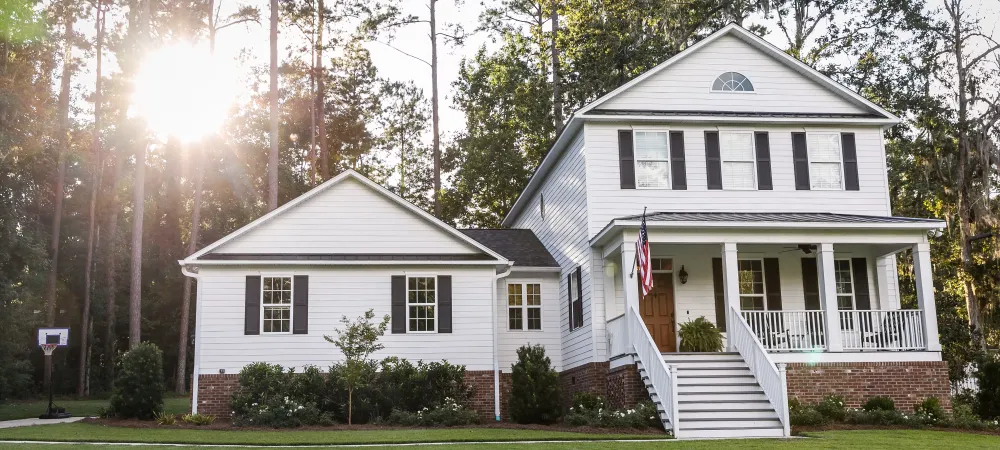How to Identify and Get Rid of Termites

What are common termites found in Texas?
The most common types of termites found living in our area of Southeast Texas are subterranean termites. As their name suggests, their colonies live in underground nests. Termites feed on things made of cellulose, preferring to feed on decaying plants, tree roots, tree stumps, fallen trees, and tree limbs. Other common types of termites in Texas include:
- Formosan Termites- they live in large colonies. A single colony may be made up of several million termites. Due to their large colony size, these termites can cause more damage in a shorter period of time than other species of termites.
- Eastern Subterranean Termites- their colonies, while not as large as Formosan termite colonies, are rather large and may be comprised of hundreds of thousands of members.
How to identify termites
When we're asked, "How do you identify termites?" or, "What does a termite look like?" it is often hard to know where to begin. All termites are not the same. If we were to tell you that termites are black with white wings, you may fail to recognize them when you open up a wall of your home and find tiny, pale, worm-like insects crawling around. In a termite colony there are 5 types of termites:
- Swarmers — The termites you're most likely to see are swarmers. These are male and female winged termites that leave the nest to form new nests. While they are only about ⅝ of an inch in length, their long white wings make them very noticeable.
- Workers — The small, pale insects you may find crawling around inside your walls are called worker termites. These are the only termites in a colony that do damage to your property. They have six legs, two antennae, and three body parts and look similar to a fat ant.
- Soldiers — If you ever uncover worker termites in your home, you're going to see soldiers as well. Soldiers are slightly larger than workers and they have big orange heads with black pincers on the front.
- Kings — There is no deadbeat dad in a termite colony. Kings are faithful to stay with their mate for life. A king termite is a male swarmer without its wings. The swarmers shed their wings after mating.
- Queens — The queen is the most unique of all the termites in her colony. As she produces offspring, her abdomen gets larger and larger. After a year, she begins to look like a tiny black swarmer attempting to escape from a big, shiny blob with brown hash marks on the top.
Are termites dangerous?
Termites are dangerous invaders for your property or home. They pose no health threats to people, but they do cause significant and costly damage inside homes and other buildings. Termites have the potential to work without notice for months, or even years, feeding on wood from the inside out. When it comes to a termite infestation, the unfortunate truth is that the infestation is usually only discovered once the damage is extensive.
How much damage can termites cause?
Researchers estimate that these insatiable bugs cause over five billion dollars worth of damage to US properties every single year. What’s worse, homeowners' insurance plans are not likely to cover your property in the event of substantial home destruction. Many companies view termite activity as an avoidable condition that is uninsurable, leaving many homeowners out in the cold.
Why do I have a termite infestation?
Termites often find their way onto a property after a termite swarm occurs on a nearby property. Then, workers will find their way into homes through cracks in the foundation or through wood-to-soil contact which happens with door frames, deck posts, wood shingles, and porch steps. Formosan termites may enter homes through their roofs.
What are the signs of termites in your home?
It can be very difficult to detect subterranean termites because the signs they leave are subtle or completely invisible.
- Noisy Walls- When termites are around, they make noise.
- Your See A Swarmer- Swarmers are flying termites looking to breed and set up new colonies.
- There Are "White Ants" Around- People often confuse termites for white or tan ants. Although the two species look similar in size and shape, termites are white and have straight antennae.
- Hollow Wood- While you might not see the damage, you may be able to hear it. If you knock on wood and you hear a hollow or papery sound, you could have termites.
- Your Doors Are Tight- If your doors seem tighter than they used to be, don’t blame it on a settling house. The real culprit could be termites. As they chew through wood, things can get warped.
- Windows Don’t Open Easily- For the same reason your doors are tight, your windows might be difficult to open. Termites produce moisture as they chew, and they can warp window frames.
- You See Tunnels In Wood- As termites eat through your wood, they make tunnels. Those tunnels aren’t usually visible, but a piece of broken wood could reveal a tunnel.
- Frass- One surefire sign of a termite infestation is frass, or termite droppings.
How can I prevent termites in the future?
To stop termites from choosing your home and property to nest on and breed in, the 'Bugsperts' offer the following prevention tips:
- Clean gutters regularly.
- Place weather stripping around windows and doors to prevent water from backing up and seeping into your home’s walls.
- Repair leaky pipes, faucets, or fixtures that are located inside or outside your home.
- Remove water-damaged wood from your home.
- Remove and replace damaged siding and roof shingles.
- Limit soil-to-wood contact near or on your home.
- Use dehumidifiers to reduce humidity levels in your home.
- Remove fallen trees, tree stumps, and other piles of organic debris from around your property.
- Leave a stone barrier between any soil or mulch and your home’s foundation.
How do I get rid of termites?
To find, accurately identify, and eliminate the termites that are living and nesting on your property or in your home, contact a professional pest control expert. At Bill Clark Pest Control, our highly trained 'Bugsperts' receive continuous education, and are up-to-date with the latest information and industry trends. To eliminate termites, our professionals provide thorough inspections and treatment through our highly effective termite control programs. For exceptional termite control in Southeast Texas, reach out to Bill Clark Pest Control.

